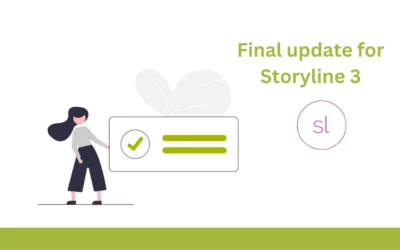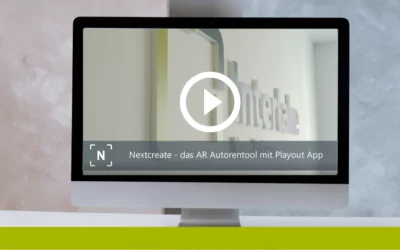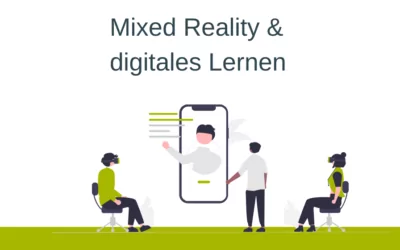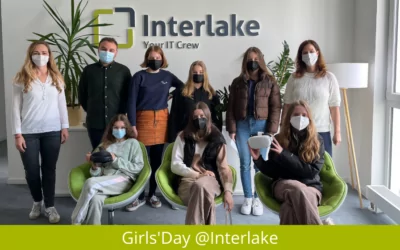
Mixed Reality (MR) offers new possibilities not just to convey content to a targeted audience, but to make it tangible. The area of digital learning is almost made for the use of MR. But what does MR actually mean? And how do you figure out when to use it?
Imagine the following scenario:There is a technical problem on a machine that you need to solve. You are pretty familiar with this type of machine, however this is a new model. After putting on an MR-enabled device, and with just a few gesture controls, the blueprint of the new model will appear before your eyes. The virtual construction plan can be directly compared with the physical machine in front of you, making it clear how to fix the problem. Not only did you get the machine running again quickly, you also learned the structure of the new model.
Does it still sound like “future music” to you? In recent years, technologies related to augmented reality (AR), virtual reality (VR) and mixed reality (MR) have made enormous leaps in development. Nowadays, technology is no longer just a crazy innovation in a research laboratory. It has become a part of our lives. Whether its playing Pokemon Go, using language assist on a car navigation system, or at home with Alexa, Siri, Cortana and Co.
VR, AR, MR – what is the difference?
You have probably heard these terms somewhere. In particular, technologies like VR glasses have found their way into the film and gaming world recently. Virtual Reality (VR) means that you “dive” into a digital or artificially created worldwith the help of certain devices. The physical world around you is completely hidden (mostly visual and auditory).
Augmented Reality (AR), on the other hand, supplements the physical world with digital elements. You continue to observe your physical environment. Virtual elements appear on physical objects via special devices, such as Microsoft’s HoloLens. For example, when you look at a physical church, you receive additional information, either as a text overlay or read aloud virtually. However, it does not necessarily have to be a special device. Many standard smartphones now contain AR capability.
Mixed Reality (MR) should become an understood term. To put it simply: If you see physical and virtual reality as two opposite ends of the spectrum, mixed reality includes all technologies between.
The trend: Content is leaving the screen

Numerous augmented reality applications are still tied to screens, like mobile phone displays, pads or monitors. An interesting application example is the book by well-known songwriter Rolf Zuckowski, “Rolfs Liedergeheimnisse”, published in 2020 in cooperation with illustrator Sarah Settgast With the help of a specially-made app, the book’s physical content is displayed with holograms of Rolf and Sarah, digital overlays of song lyrics, and the appropriate music. An exciting scenario in which this technology has been used to allow “actual” content to be experienced in a completely new way.
However,one trend is clear, according to Sven Slazenger, CEO of Interlake: “A clear development can be seen. Starting with the detachment from the screen, and towards the integration of artificial reality into the “natural” movement of humans.” It remains true that special devices will still be needed in the near future. However, these are becoming more and more comfortable and intuitive to use. Most mobile phones now contain an integrated AR function. The possibilities of navigation are becoming even more diverse. Already widespread voice control is supplemented with eye and gesture control, which is already used in most AR or VR glasses. This means progress not only in terms of operation, but also with regard to one’s own mobility. Becase, now, learning and working no longer have to take place where a monitor is present.
Mixed Reality in Digital Learning
 What “extended mobility” can mean is clearly shown in the example mentioned at the beginning. Learning can take place directly where it is needed or in the immediate context of work. This gives “learning in the flow of work” a whole new definition. Especially in the AR area, complex (learning) content can be developed step by step in a specific application. Through the combination of learning content and its application – practically in real time – learned content can be better stored in the brainand can be called up later. Colleagues’ knowledge can also be accessed if necessary due to the collaboration options already available. In addition, errors are reduced, security is increased and any gaps in knowledge are closed. There are a vast amount of possible applications. But how can one be speifically chosen for your company?
What “extended mobility” can mean is clearly shown in the example mentioned at the beginning. Learning can take place directly where it is needed or in the immediate context of work. This gives “learning in the flow of work” a whole new definition. Especially in the AR area, complex (learning) content can be developed step by step in a specific application. Through the combination of learning content and its application – practically in real time – learned content can be better stored in the brainand can be called up later. Colleagues’ knowledge can also be accessed if necessary due to the collaboration options already available. In addition, errors are reduced, security is increased and any gaps in knowledge are closed. There are a vast amount of possible applications. But how can one be speifically chosen for your company?
Find, analyze and prepare your own use cases in the MR workshop .
Skepticism is great at the beginning – “That all sounds really cool, but how exactly is this supposed to work in our company?” or “that’s all still too vague – our management will never agree to that!” are often questions that first arise. “We are aware that there is some initial hesitation about our own application in the company. This is a complex topic that needs to be approached step by step.” says Jenny Beutnagel, Director of Corporate Development at Interlake.ß
Based on the results of various customer projects as well as our experience in areas of 3D and mixed reality, we have developed a special workshop format that is dedicated to solving this problem. The goal is to get a good understanding of the technology itself and the possibilities it offers. On the other hand, ideas and application scenarios specially tailored to the company are developed with the customer, evaluated with regard to feasibility, and the next steps are derived. The result is a profound concept that serves as a base for discussion within the company. At the same time, the workshop is designed to stimulate thought, inspire, and give impulses for innovation in the context of one’s own daily work. Our expertise is also available once the workshop is complete.
Due to our close partnership with Microsoftand as a founding member of Volucap, we have the expertise needed to implement 3D experiences in digital learning. We support you in setting up your company for the future with the help of Mixed Reality (MR)!
You can find more detailed information about our workshop on ourMixed Reality page. Or contact us directly through our form – we will get back to you as soon as possible!




